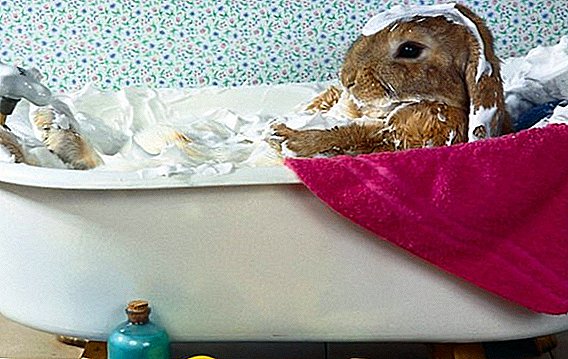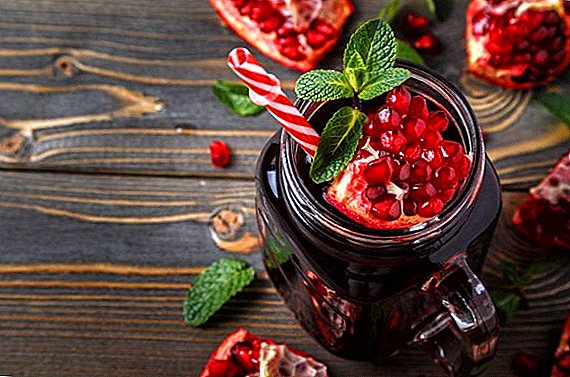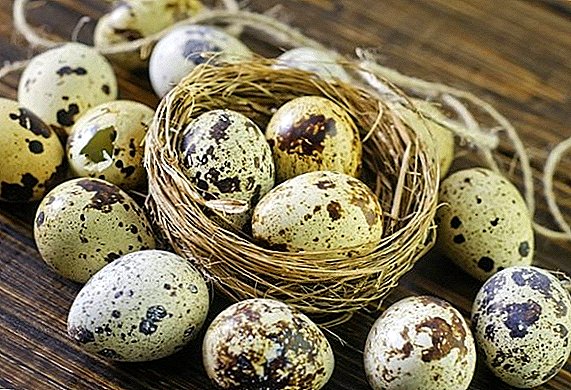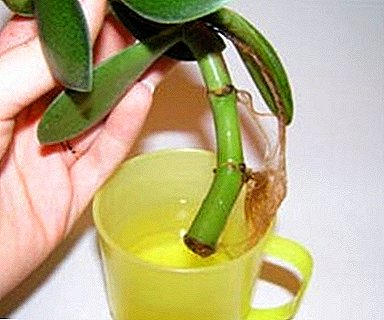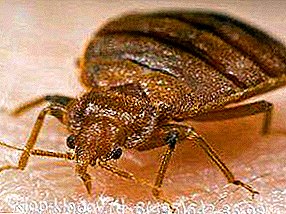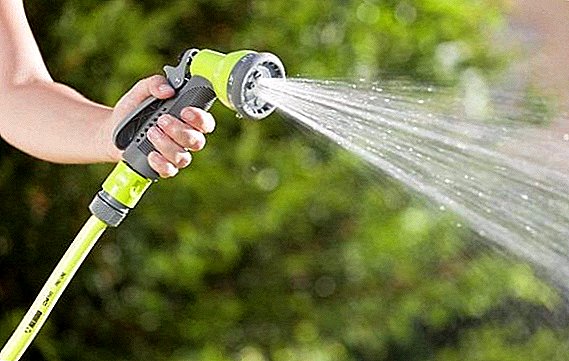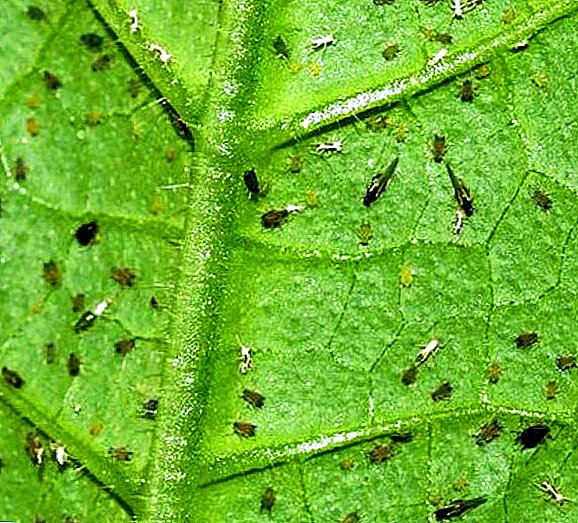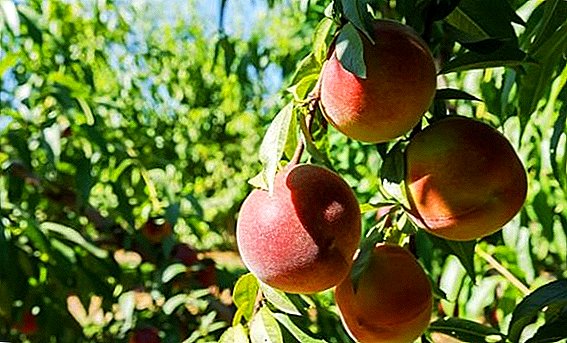 If your peach orchard defeated a variety of ailments, do not despair and put an end to the harvest. Most diseases are not so difficult to overcome. You should arm yourself with patience, recommendations from experienced gardeners and disease control products that can be easily bought at the nearest specialist store.
If your peach orchard defeated a variety of ailments, do not despair and put an end to the harvest. Most diseases are not so difficult to overcome. You should arm yourself with patience, recommendations from experienced gardeners and disease control products that can be easily bought at the nearest specialist store.
Peach Fruit Diseases
During the period of fruit ripening peach is most susceptible to various diseases. Some of them can not only negate the crop and ruin the tree, but also cause considerable damage to other nearby trees. The most common ailments are clotsoporosis, peach leaf curl, gray fruit rot (stone bone moniliosis), cytosporosis, and others. Protection against peach disease is not so difficult, you need to follow some rules for care, and then you can collect a good harvest.
Did you know? Peach tree belongs to the subgenus Almond. The peach is very similar with the almond tree, and they differ only in fruits.
Stonepile monilioz (gray fruit rot)
Monilioz - one of the most famous and unsafe diseases of peach. Gray rot may occur at the very beginning of spring. With the development of the disease there is a strong drying out and darkening of the flowers, the death of young fruitful twigs. In the main, the ovaries are infected, which dry out at the end of flowering. With summer infection, even a perennial branch may die. On the fruits, the disease manifests itself as a darkened spot, which soon expands, the flesh becomes dark brown, and the fruit dries out completely. If an infected fruit comes into contact with a healthy one, it also becomes infected.  The peak of the disease manifests itself in cold and wet weather during flowering. The pests are spreading the disease - the eastern moth and bud weevils. The main causative agent of the disease is the mushroom Moniliacinerea Bonord, which is in the marsupial stage. The winter period the fungus survives in the affected branches and, actively developing in the spring, destroys entire branches. There are two ways to treat peach moniliosis. Subjected to infection branches and shoots burned, and the tree make rejuvenating pruning. Or you need to spray the flowers with 1% Bordeaux liquid. At the beginning of the growth of the fruit, the tree can be treated with 90% copper oxychloride solution. It is applied in four stages with a break of twenty days.
The peak of the disease manifests itself in cold and wet weather during flowering. The pests are spreading the disease - the eastern moth and bud weevils. The main causative agent of the disease is the mushroom Moniliacinerea Bonord, which is in the marsupial stage. The winter period the fungus survives in the affected branches and, actively developing in the spring, destroys entire branches. There are two ways to treat peach moniliosis. Subjected to infection branches and shoots burned, and the tree make rejuvenating pruning. Or you need to spray the flowers with 1% Bordeaux liquid. At the beginning of the growth of the fruit, the tree can be treated with 90% copper oxychloride solution. It is applied in four stages with a break of twenty days.
Mealy dew
The disease manifests itself first in May on young leaves, and later - on the tops of the shoots and on the fruits. On the shoots formed a film of mycelium. Diseased leaves take the form of a boat and fall off. The more young shoots on the tree, the stronger the disease will develop. Crumbled infected leaves expose the tops of the shoots. Peach fruits begin to crack, decrease in size. After defeat, the fetus completely rot. Fighting the disease should also be pruning all infected shoots and twigs. It is important to pay attention to the collection of foliage, which later along with the branches must be destroyed. It is also necessary to carry out pruning for rejuvenation. At the first signs of powdery mildew spray sulfur-containing drugs. At the end of flowering must be treated with "Topsin" or a similar peach fungicide. 
Did you know? Peach plantations occupy the third place in Europe in terms of area, second only to apples and pears.
Fruit Rot
Fruit rot - ailment, endangering the fruits of peach and nectarine. Small spots of gray appear on the visible part of the surface of the fruit, after which they grow over the entire surface, forming a completely rotten fruit. Infection penetrates through the damaged area left on the fruit by the moth or bud weevil. Sick fruit, in contact with healthy, infects it.
 Excessive air humidity contributes to the active flourishing of the disease. The causative agent of the disease is also a fungus. The first rotten fruit appears in mid-June. The peak of the disease, which can cover the entire crop of the tree, comes at the end of August, before harvesting. The incubation period of the disease is extremely fast. From the moment of infection until the first signs appear, it takes about five days. When fighting with fruit rot, it is necessary to destroy fallen fruits every day, and in the fall, in addition to the carrion, clean the tree from hanging damaged fruits. Before flowering, treatment with a Teldor or Topsin M type fungicide is necessary. After flowering, the peach is sprayed again, processing will also be needed during the ripening of the fruit.
Excessive air humidity contributes to the active flourishing of the disease. The causative agent of the disease is also a fungus. The first rotten fruit appears in mid-June. The peak of the disease, which can cover the entire crop of the tree, comes at the end of August, before harvesting. The incubation period of the disease is extremely fast. From the moment of infection until the first signs appear, it takes about five days. When fighting with fruit rot, it is necessary to destroy fallen fruits every day, and in the fall, in addition to the carrion, clean the tree from hanging damaged fruits. Before flowering, treatment with a Teldor or Topsin M type fungicide is necessary. After flowering, the peach is sprayed again, processing will also be needed during the ripening of the fruit.
Peach Leaf Diseases
Peach leaves are also susceptible to various diseases. Treatment of peaches for diseases is one of the key points in the treatment of ailments.
Important! When handling chemicals, be sure to adhere to safety rules, closing open parts of the body and protecting the airways.
Klesterosporiosis (perforated spotting)
Peach klyasterosporioz - a common disease that affects not only the leaves, young shoots, flowers, but also the fruits themselves. The infection appears first on the leaves with brown spots with crimson framing. Parts of the leaf, which hit the disease, dry up and die, leaving a hole on the leaf, which gave the name of the disease - perforated spotting. It also affects young shoots. Round orange spots appear on them, which then stretch along the bark, after which yellow substance appears on them. Shoots affected by the fungus die off, and the entire branch may die. On fruits, it appears as small orange spots that darken over time. Affected fruit crust completely, forming cracks. Fruits with a delicate skin are most at risk.  The causative agent is a fungus that manifests itself in ulcers on flowers, branches and shoots. In rain and strong wind, the fungus is transferred to healthy fruits and, multiplying, can cover the whole tree. To stop the disease, before flowering, cut off all infected branches, processing the cut points with lime with the addition of copper sulfate, and cover with a layer of oil paint. Spraying of copper oxychloride during the period of kidney swelling will also be an effective method. The next two times spraying is carried out at the beginning of flowering and at the end.
The causative agent is a fungus that manifests itself in ulcers on flowers, branches and shoots. In rain and strong wind, the fungus is transferred to healthy fruits and, multiplying, can cover the whole tree. To stop the disease, before flowering, cut off all infected branches, processing the cut points with lime with the addition of copper sulfate, and cover with a layer of oil paint. Spraying of copper oxychloride during the period of kidney swelling will also be an effective method. The next two times spraying is carried out at the beginning of flowering and at the end.
Leaf curl
This disease manifests itself during flowering. Diseased leaves take on a yellowish color, sometimes red with hints of pink. There is their deformation, darkening. Leaves grow in size, become brittle. Later on the inside, a white bloom is formed - a fungus, which is the causative agent. If the spring was rainy, the fruit of the peach can be sick. When growing on them, a film is formed that does not allow the peach to grow, which is why their taste deteriorates. How to treat peach curl? It is necessary to get rid of the disease, first cutting off the diseased shoots, then collect the infected foliage and destroy. They carry out timely watering and anti-aging pruning. At the beginning of flowering, in three stages with a break of two weeks, the tree is sprayed with a mixture of blue vitriol and lime. 
Important! When spraying wood with various chemicals, do not forget to clarify their compatibility.
Mealy dew
Mealy dew is a serious affliction for many fruit plants. Leaves and young twigs perish from it, and in peach the disease affects the fruit. The disease is recognized by white bloom on the fruit, which occupies almost half of its area. The early stage is not so easy to recognize, it appears on the inside of the leaf in early May. Infected branches stop developing, change shape, and some may even die. The disease reaches its peak of activity by mid-summer, especially during periods of severe weather changes, when prolonged precipitation is replaced by hot weather. Effectively to fight the infection will help spring or autumn pruning of affected branches. It is also worth paying attention to the fallen leaves and fruits. They need to be carefully collected and burned, as the pathogen can be transported by air. After the end of the flowering phase, the tree must be treated with Topaz. It also does not hurt the treatment of a number of growing stone trees. It does not interfere with the simultaneous spraying of insecticides, provided the compatibility of drugs. 
Peach trunk diseases
A variety of ailments can affect not only the fruits and leaves, but also the trunks of fruit trees. The most common disease of peach bark is cytosporosis.
Cytosporosis
It is a disease that affects the layer between the bark and the tree itself. A sign of infection - fading tops of the shoots and brownish spots on the bark, sometimes smudges of the same color. The infection comes down from above, capturing new shoots and perennial branches. When it falls to the trunk, the tree is already in grave danger. If you run the disease to such a state, there is a big risk of losing most of the fertile branches, endangering the harvest and the future life of the tree.  It is necessary to get rid of the disease by cutting off the damaged branches, even the skeletal branches must be removed completely. If a small part of the fungus remains on the tree, it will soon again begin to multiply progressively. Cut branches are best burned, as the spores of the fungus are easily carried by the wind and can infect other fruit trees. Spraying with a mixture of copper sulphate and lime will also be an effective treatment. The annual spraying of 3% Bordeaux liquid and whitewashing of trunks and skeletal branches prevents the disease.
It is necessary to get rid of the disease by cutting off the damaged branches, even the skeletal branches must be removed completely. If a small part of the fungus remains on the tree, it will soon again begin to multiply progressively. Cut branches are best burned, as the spores of the fungus are easily carried by the wind and can infect other fruit trees. Spraying with a mixture of copper sulphate and lime will also be an effective treatment. The annual spraying of 3% Bordeaux liquid and whitewashing of trunks and skeletal branches prevents the disease.
Preventive measures against peach disease
In order to prevent various peach diseases and effectively fight them, it is necessary to carry out some agricultural practices every year. In order not to think about how to cure a peach, it is best not to forget about the prevention of diseases. Before flowering, be sure to cut off all damaged branches and shoots. An important role is played by anti-aging trimming. Almost all diseases affecting peach trees are easily transported through the air. therefore All cut diseased branches must be removed from the garden. The most reliable way to protect the garden is to burn infected branches. Also do not forget about chemical processing. From March to June, it is necessary to process wood with special chemicals. Only in July with the growth of fruits is not recommended the use of chemistry. But when the fruit ripens, the tree should be well watered and fed.
As you can see, the peach is quite whimsical, but caring for it is not so difficult, but requires responsibility. Follow all care guidelines, do not forget to monitor the growth of shoots and timely pruning, thereby protecting the peach from disease. And already in the fall you can enjoy fragrant fruit.


